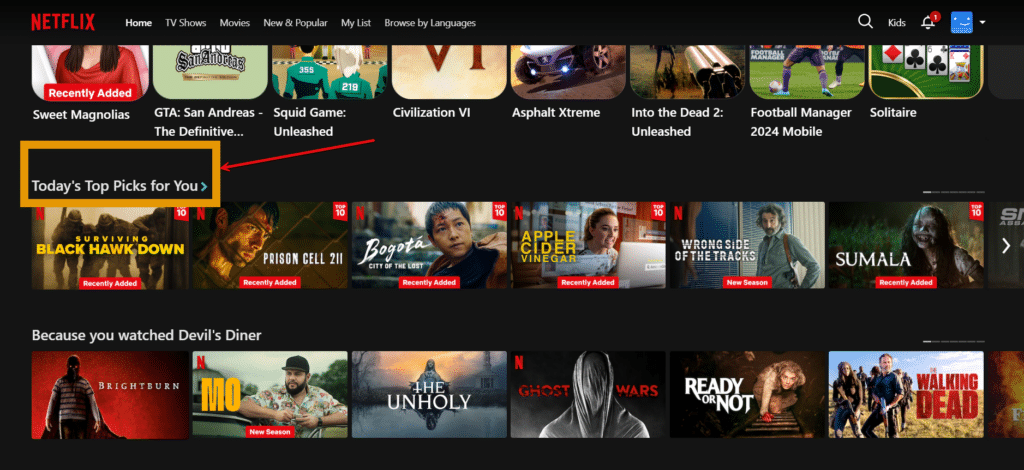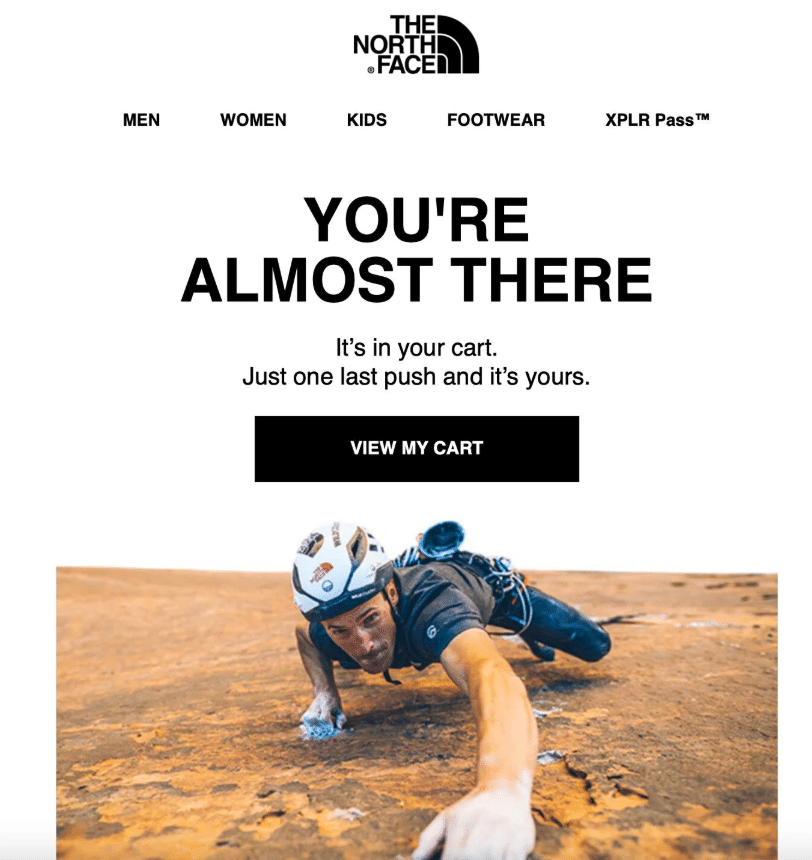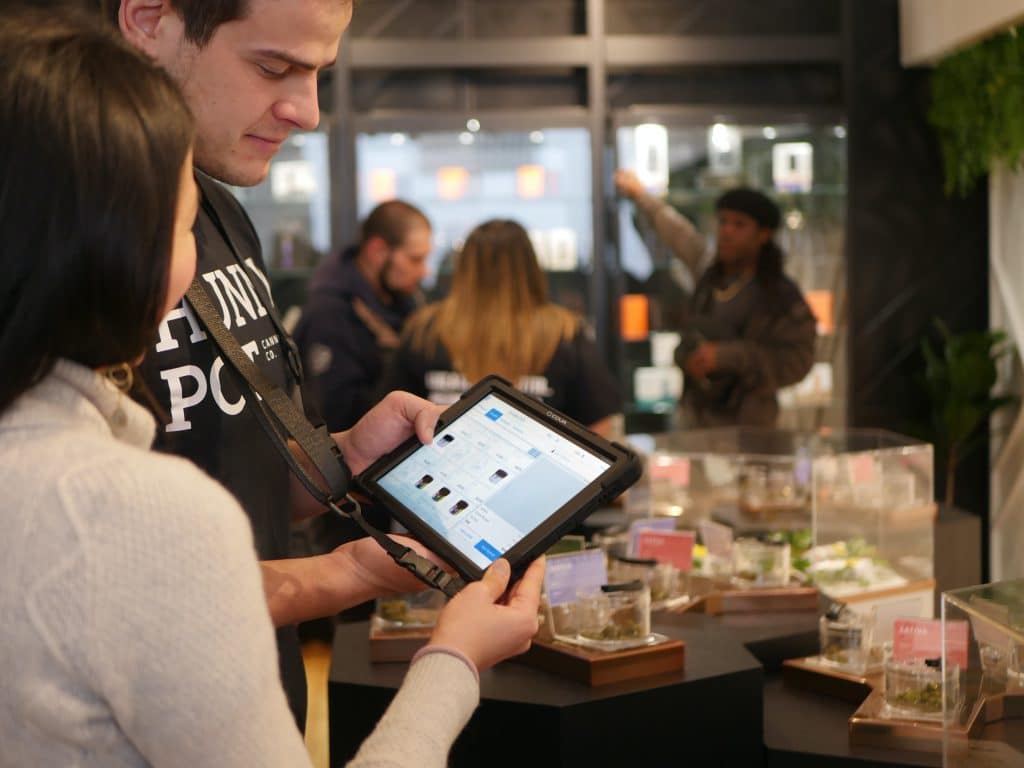Behavioral marketing is one of the most effective ways to increase the number of customers who buy your products or services.
We’re not just talking about customers but quality customers—those high-value prospects who will spend more, buy more often, and boost your business.
The good news is that behavioral marketing isn’t a “black box” solution you must spend big bucks on before it works. Instead, it can be a relatively simple process that helps you better target your customers and reach them on whatever devices they are using.
Businesses can create highly targeted campaigns that resonate with the right audience by leveraging behavioral marketing strategies.
Let’s examine how behavioral marketing works, how it benefits customers, and some examples of common behavior.
What is Behavioral Marketing?
Behavioral marketing is a marketing strategy that leverages customer behavior data, such as browsing patterns, purchase history, and interaction with content, to deliver personalized and relevant marketing messages.
This approach goes beyond traditional demographics by focusing on what customers do. Businesses can anticipate needs, tailor offers, and engage customers more effectively by analyzing consumer behavior data from various touchpoints.
How Does Behavioral Marketing Work?
Companies use cookies, pixels, and other technologies to track your online activity when you visit their websites, apps, or other digital services.
This information can then be used to target you with relevant advertising that might be more effective than untargeted ads.
Here’s how it typically works:
-
Data Collection: The process begins by gathering data from various touchpoints, such as websites, apps, emails, and social media platforms. This includes tracking search history, past purchases, and engagement levels to create personalized marketing campaigns.
-
Segmentation: Once data is collected, it groups customers based on shared behaviors or patterns. This helps businesses identify key behavioral patterns and create relevant marketing strategies that align with customer interests.
-
Targeted Messaging: With these segments in place, you can create personalized marketing messages tailored to each group. This type of behavioral targeting ensures that customers receive content that aligns with their past interactions and preferences.
-
Execution Across Channels: These targeted messages are then delivered through various marketing channels, such as email, social media, or paid ads, ensuring that the right message reaches the right customer at the right time.
-
Continuous Improvement: Behavioral marketing is an ongoing process. As more data is collected, the system becomes smarter, allowing you to refine your segments, improve targeting, and optimize your campaigns for better results.
Types of Behavioral Marketing
-
Personalized Ads.
Behavioral marketing involves using data from your website to target potential customers with personalized ads on other websites.
I’m chatting with my friends on Facebook Messenger about getting new pots for my kitchen—just a casual conversation, no searches, no website visits.
A few days later, I open Instagram, and guess what I see? Pots. Yep, you guessed right. Ads for cookware, kitchen sets, and even the exact style I was considering started popping up in my feed.

This isn’t magic—it’s behavioral marketing at work. Platforms like Facebook (Meta) track interactions, topics of interest, and browsing habits across their ecosystem to deliver hyper-personalized ads.
Even if I didn’t actively search for pots, my online behavior signals interest, and the ad algorithm picks up on it. This is why brands invest in personalized advertising—to reach potential customers at just the right moment, often before they even realize they’re ready to buy.
-
Targeted emails.
Suppose the person visiting your site doesn’t sign up for an email newsletter but does purchase something from you.
In that case, you can send them a follow-up email asking if they’d like to receive more information about related items or services that might interest them (again, using data gathered from previous purchases).
This can be effective because those who’ve already purchased something from you will likely buy from you again.
-
Dynamic Website Content
Behavioral marketing allows you to customize the content visitors see based on their previous interactions with your website.
For instance, if a customer frequently browses a particular category, like running shoes, your homepage can dynamically feature those products when they return.
This tailored experience makes the site more relevant to their interests, increasing the chances of conversion by showing them exactly what they are looking for.
-
Product Recommendations
Netflix’s recommendation system is a perfect example of behavioral marketing in action. Every time you watch a show, pause a movie, or browse different genres, Netflix collects data on your viewing habits. Instead of showing random content, it uses this data to create highly personalized recommendations tailored to your preferences.
For instance, if you binge-watch crime documentaries, Netflix is more likely to suggest similar true crime series rather than romantic comedies.

It also considers watch history, time spent on certain titles, and engagement patterns to refine its suggestions.
This predictive approach keeps users engaged, reduces decision fatigue, and increases the likelihood of continued subscriptions—all key goals of behavioral marketing.
-
Retargeting Abandoned Carts
Behavioral marketing can be highly effective in recovering abandoned shopping carts.
If a customer adds items to their cart but doesn’t complete the purchase, you can send a reminder email or display retargeted ads with a gentle nudge, like a limited-time discount.

This reminds the customer of their pending purchase and can motivate them to return and complete the transaction, reducing cart abandonment rates.
Benefits of Behavioral Marketing
Behavioral marketing aims to understand what your customers like and don’t like so they can be targeted with ads and offers that are more likely to resonate with them.
Although this type of marketing has existed for decades, it only recently became possible due to the growth in the amount and type of data available.
The benefits of behavioral marketing include the following:
-
Behavioral marketing offers a personal touch.
Behavioral marketing enables brands to deliver highly personalized experiences by tailoring offers and content based on individual customer actions. By utilizing customer data, companies can refine their messaging and increase engagement.
For instance, if customers browse products without making a purchase, sending a personalized email with a discount can nudge them to complete the transaction.
This approach is powerful, as 80% of customers are likelier to buy from brands offering a personalized experience.
By crafting content that aligns with customer behavior, brands can also drive immediate sales while fostering long-term loyalty.
For example, Brooks uses behavioral marketing to send personalized emails based on users’ location information, offering targeted promotions that resonate with different climate zones.

 (Source)
(Source)
The two versions are created on a single template but have different offers that target users from different climate zones.
-
Behavioral marketing keeps your brand in front of your customers
Maintaining visibility is key to building lasting customer relationships, and behavioral marketing excels at this by keeping your brand top-of-mind through relevant, timely engagements.
Behavioral marketing targets those ready to buy instead of relying on generic advertising, making marketing efforts more efficient and effective.
Leveraging consumer data can significantly impact your business—according to McKinsey, it can boost sales growth by 85% and gross margins by over 25%.
For example, suppose a customer regularly visits your website every Tuesday at 8:00 AM. In that case, you can anticipate their behavior and send a reminder email about a promotion scheduled for the next day on Monday night, encouraging their return.
Take a real-life example: Zuji, an international travel site, uses customers’ past searches and behavior to offer personalized offers.
The brand displays these ads based on users’ past page behavior and considers how often the user has visited the page to push personalized offers. It increases the likelihood of conversions.
-
Behavioral marketing strengthens customer relationships.
Behavioral marketing is a powerful tool for building deeper connections with customers by focusing on their actual behaviors rather than just demographics or general interests.
By understanding and responding to customers’ routines and preferences, brands can engage in more meaningful interactions.
This approach strengthens relationships and ensures that marketing efforts are truly relevant.
-
Opportunities for cross-sells and upsells
Behavioral marketing also creates opportunities for cross-selling and upselling, helping to increase sales while providing customers with more tailored options.
For example, if a customer orders flowers online and selects same-day delivery, offering them an add-on like cupcakes or balloons can enhance their purchase.
Similarly, if someone is buying a mid-range TV, suggesting an upgrade to a high-end 4K model could lead to a higher-value sale.
These strategies benefit customers by offering them relevant choices and enhancing their shopping experience.

Amazon’s “Frequently Bought Together” feature is a prime example, suggesting complementary products that customers will likely find useful.
-
Behavioral marketing provides tailored content to customers
One of the most significant advantages of behavioral marketing is its ability to deliver content that speaks directly to the needs and interests of each customer.
By analyzing customer activities and preferences, brands can create messages that resonate on a personal level.
For example, a retailer might send a targeted email promoting a new line of winter coats to a customer who recently purchased gloves, increasing the relevance of the offer.
Behavioral marketing also allows companies to tailor their campaigns based on specific customer characteristics, such as targeting younger consumers with accident coverage options in an insurance campaign.
A practical example is Mariah Coz’s blog, where she uses behavioral marketing to connect deeply with her audience by addressing their pain points and offering personalized advice and solutions.

 (Source)
(Source)
She empathizes with the readers’ pain points, discusses the benefits of buying her course, and uses distinctive sales techniques, such as debunking myths.
Behavioral marketing helps her make the reader feel like she’s talking directly to them.
What is Behavioral Segmentation in Marketing?
Types of Behavioral Segmentation in Marketing
Behavioral segmentation is based on the understanding that each consumer has unique needs and preferences.
It’s a way to understand how different groups respond to various products and services.
It uses research to identify groups with similar buying behaviors and tailor marketing messages and offers to those groups.
There are several types of behavioral segmentation:
-
Based on Purchase Behavior
Purchase behavior is a behavioral segmentation used to identify and analyze customers who have already purchased a product or service.
This information can help marketers predict the likelihood that other customers will buy from them and how much they will spend.
Purchase behavior is helpful because it allows companies to determine which products are most popular among current customers, what characteristics those products share, and what factors influence people’s decision-making when buying those products or services.
-
Based on Occasion and Timing
Occasion-based behavioral segmentation categorizes customers based on when they make purchases, such as holiday shoppers or vacationers buying souvenirs.
This approach helps identify groups that purchase similar products for different occasions, such as gifts for birthdays, holidays, or other special events.
Timing-based segmentation focuses on when customers make their purchases, such as back-to-school shopping or seasonal trends.
This method is valuable for understanding consumer behavior patterns over time and identifying key periods that influence purchasing decisions.
-
Based on Benefits Sought
The most common approach is to segment consumers based on the benefit they seek from your product or service.
For example, some consumers may seek high quality while others may be more concerned with price.
You can also use this method to divide customers into groups with similar needs.
-
Based on Customer Loyalty
Customer loyalty is an important factor in deciding how to segment a market.
Loyal customers are likely to buy more of the same product, which makes them less price-sensitive.
They may also be more willing to try new products from the same company so that they can be used as a test market for new products.
Over to You!
Online marketing is an ever-changing and innovative space. Ensuring a lasting customer experience requires brands to take advantage of the latest resources and technology, including behavioral marketing tools, to provide tailored content to each customer.
We are already seeing a surge of campaigns that utilize individual consumers’ information, including their profiles and interests, to offer great deals and promotions when necessary.
Behavioral marketing technology will help brands connect with consumers by personalizing their experience. This trend will continue rising as more companies learn how to leverage more personalized marketing techniques.
Ultimately, it’s a matter of semantics. The important thing to remember is that behavioral marketing takes a more direct approach to using data to target customers with tailored content. This strategy opens up many new opportunities for marketers and may even dent the aggressive growth rate we discussed above.
Behavioral Marketing FAQs
What is an example of behavioral marketing?
Behavioral marketing involves tailoring marketing efforts based on consumers' observed actions and behaviors. For example, an e-commerce website might recommend products based on a customer’s past purchases or browsing history. If someone frequently views running shoes, the site could display ads or email offers featuring the latest models or related accessories, like running socks or water bottles.
What is behavior marketing?
Behavioral marketing is a strategy that uses data about consumers’ online and offline behaviors to deliver personalized marketing messages. This can include tracking website visits, app usage, purchase history, and engagement with ads to understand a consumer’s preferences better and target them with relevant content, offers, or promotions.
What is behavioral advertising?
Behavioral advertising is a subset of behavioral marketing where ads are personalized based on a user’s behavior. This could involve showing targeted ads to someone who has recently visited a specific website, abandoned a shopping cart, or searched for specific keywords. For instance, if someone searches for “budget hotels in Paris,” they might see ads for Paris hotel deals or travel packages on their social media feeds or other websites they visit.
What are the 4 types of behavioral segmentation?
- Purchase Behavior: Categorizing consumers based on their buying habits, such as first-time buyers, loyal customers, or deal-seekers.
- Usage Behavior: Segmenting users based on how they use a product or service, such as frequency of use (e.g., heavy, medium, or light users).
- Benefit-Sought Behavior: Grouping customers by the specific benefits they seek from a product or service, such as convenience, quality, or affordability.
- Occasion-Based Behavior: Understanding consumer behavior based on specific occasions, like holidays, birthdays, or seasonal trends influencing purchasing decisions.
What is behavioral targeting in marketing?
Behavioral targeting in marketing is the practice of using consumer data, such as browsing history, search activity, and purchase behavior, to deliver personalized ads and content. This helps businesses show relevant marketing messages to the right audience at the right time.
What is behavioral segmentation in marketing?
Behavioral segmentation in marketing is the process of grouping consumers based on their actions, such as purchasing habits, product usage, brand interactions, and engagement levels. It allows businesses to tailor their marketing efforts to specific customer segments for better personalization and effectiveness.

